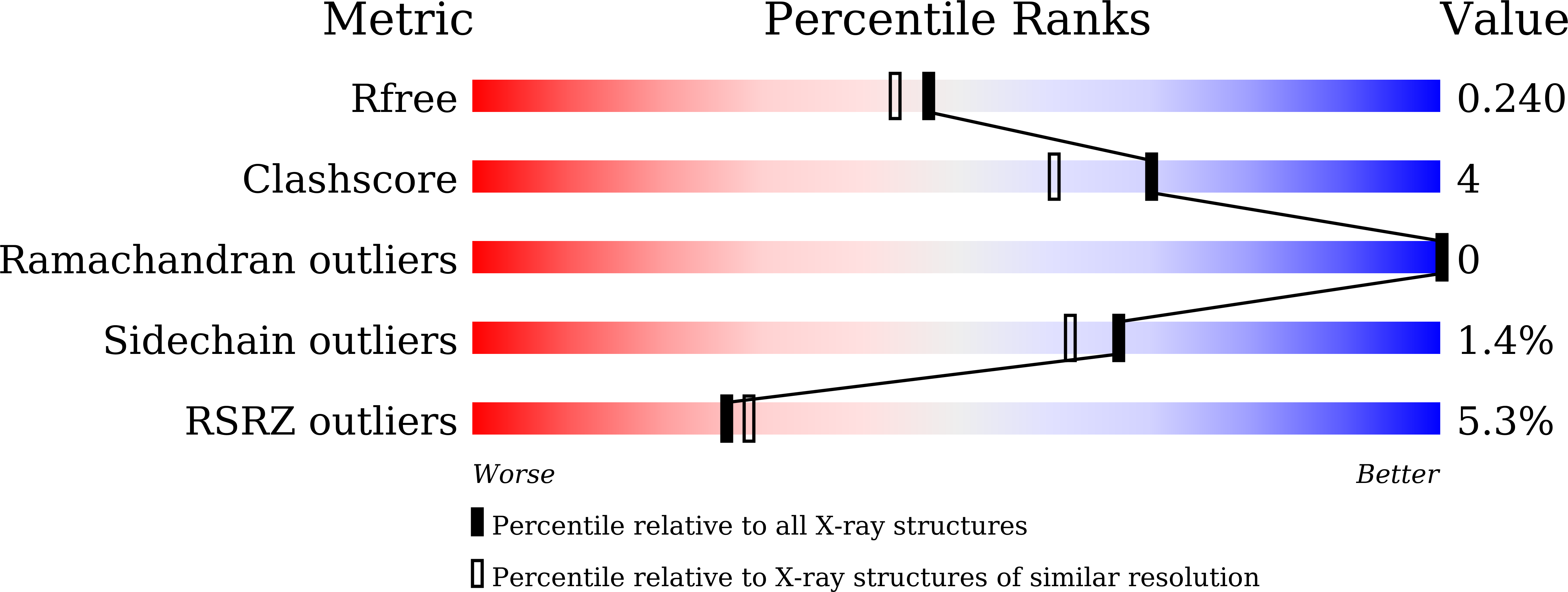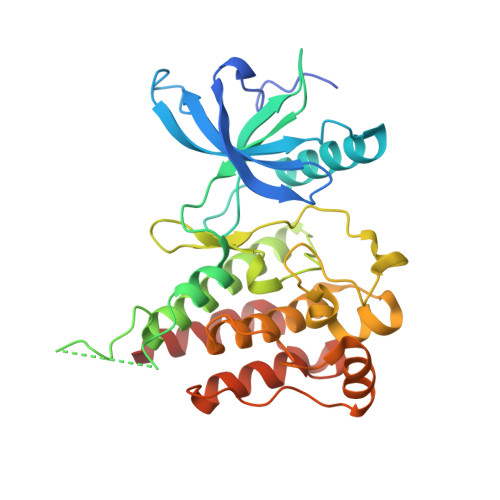Structure-based design of a dual-warhead covalent inhibitor of FGFR4.
Chen, X., Li, H., Lin, Q., Dai, S., Yue, S., Qu, L., Li, M., Guo, M., Wei, H., Li, J., Jiang, L., Xu, G., Chen, Y.(2022) Commun Chem 5: 36-36
- PubMed: 36697897
- DOI: https://doi.org/10.1038/s42004-022-00657-9
- Primary Citation of Related Structures:
7V29 - PubMed Abstract:
The fibroblast growth factor 19 (FGF19)/fibroblast growth factor receptor 4 (FGFR4) signaling pathways play critical roles in a variety of cancers, such as hepatocellular carcinoma (HCC). FGFR4 is recognized as a promising target to treat HCC. Currently, all FGFR covalent inhibitors target one of the two cysteines (Cys477 and Cys552). Here, we designed and synthesized a dual-warhead covalent FGFR4 inhibitor, CXF-009, targeting Cys477 and Cys552 of FGFR4. We report the cocrystal structure of FGFR4 with CXF-009, which exhibits a dual-warhead covalent binding mode. CXF-009 exhibited stronger selectivity for FGFR4 than FGFR1-3 and other kinases. CXF-009 can also potently inhibit the single cystine mutants, FGFR4(C477A) and FGFR4(C552A), of FGFR4. In summary, our study provides a dual-warhead covalent FGFR4 inhibitor that can covalently target two cysteines of FGFR4. CXF-009, to our knowledge, is the first reported inhibitor that forms dual-warhead covalent bonds with two cysteine residues in FGFR4. CXF-009 also has the potential to overcome drug induced resistant FGFR4 mutations and might serve as a lead compound for future anticancer drug discovery.
Organizational Affiliation:
Department of Oncology, NHC Key Laboratory of Cancer Proteomics, State Local Joint Engineering Laboratory for Anticancer Drugs, Xiangya Hospital, Central South University, Changsha, Hunan, China.
















